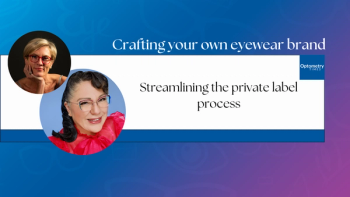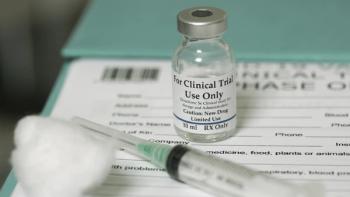
- Optometry Times September 2019
- Volume 11
- Issue 9
Ensure patients know follow-up visits may be covered
Earlier this summer summer, I came across a
About a year and a half ago, I prescribed glasses for a 5-year-old. I diagnosed her with refractive amblyopia OS. Her wet retinoscopy finding for that eye was +4.50-2.75 x 180 with a best-correct visual acuity of 20/50.
Previously by Dr. Casella:
My typical modus operandi after discovering such a finding is to have the usual and customary “polycarbonate lenses full-time wear” conversation with the parent or guardian and schedule the patient back for a visual acuity check, which is typically in two to three months.
This particular patient missed, rescheduled, and subsequently missed several visual acuity checks in a row, then returned again (a little over a year later) for another comprehensive examination.
Fortunately, the child had been wearing her glasses with some degree of consistency, and best correct visual acuity in that eye had improved to nearly 20/25. I educated the parent on compliance and the need to keep follow-up appointments as prescribed so that I can detect a visual acuity plateau and patch if indicated. She stated that she had checked with their vision insurance, and follow-up visits were not covered.
Related:
Not just vision coverage
It was then that I realized what was going on. Even though my staff had correctly obtained a copy of the patient’s medical insurance card, the parent thought that because I was an eye doctor, only their vision insurance worked at my office.
I explained to her that refractive amblyopia, unlike hyperopia or astigmatism, was a diagnosis recognized by the child’s medical insurance as a condition requiring follow-up care as indicated. She was simply unaware and trying to avoid a pile of bills from out-of-pocket follow-up visits. She thanked me for letting her know, and we scheduled a subsequent visual acuity check for the child.
Related:
Since then, I have tried my best, when appropriate, to adopt a policy of casually stating that follow-up visits are billable to a patient’s medical insurance company. I’m trying to be careful so I don’t insult patients by causing them think that I don’t believe they can afford healthcare.
I will let you know how this new strategy evolves over the coming months. Truly, anything I can reasonably and tangibly do to enhance patient compliance is worth a shot.
Articles in this issue
about 6 years ago
How to incorporate nutrition into dry eye practiceabout 6 years ago
As seen on TV: Doing harm, not help, to the ocular surfaceabout 6 years ago
Overlooked causes of dry eyeabout 6 years ago
Use aesthetics to treat lid and periorbital conditionsabout 6 years ago
How pain gates affect dry eye and chronic painover 6 years ago
How inflammation may play a role in retinal diseaseover 6 years ago
How implementing a hiring process netted a great staffover 6 years ago
Follow new norm of identifying and treating patient pitfallsover 6 years ago
Consider IOP fluctuations when diagnosing glaucomaNewsletter
Want more insights like this? Subscribe to Optometry Times and get clinical pearls and practice tips delivered straight to your inbox.













































.png)


